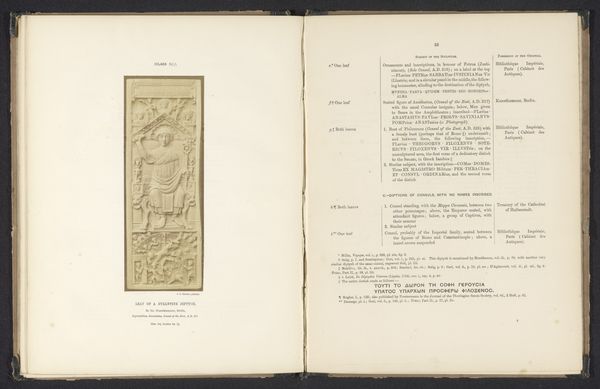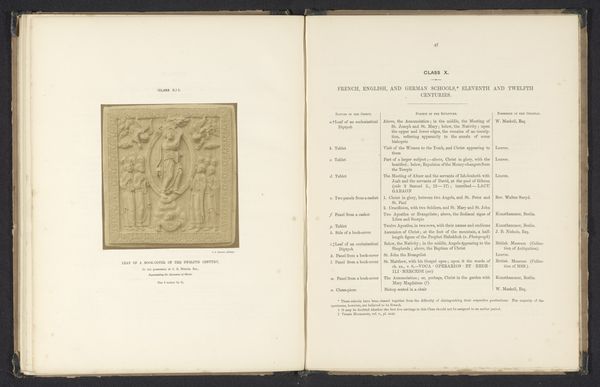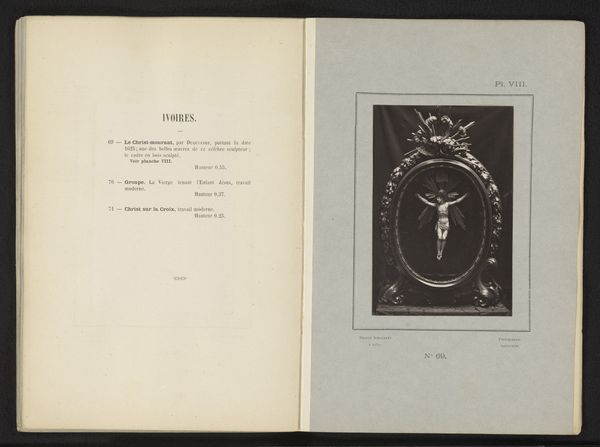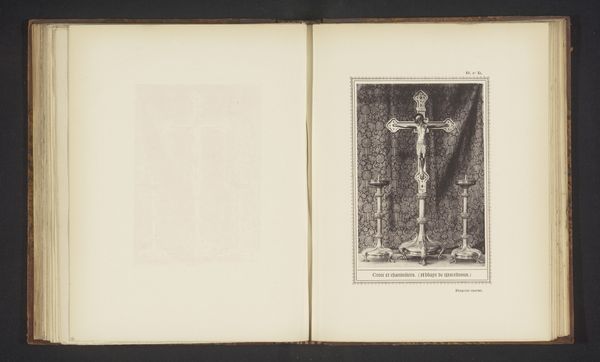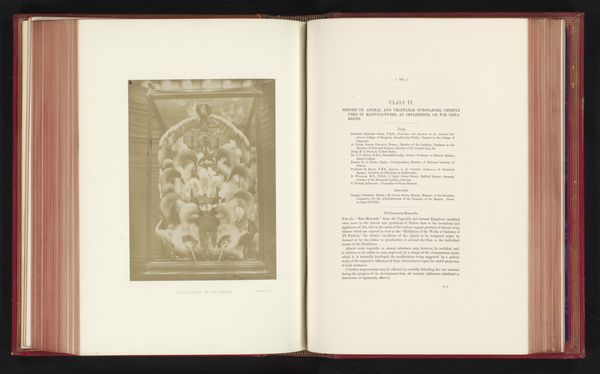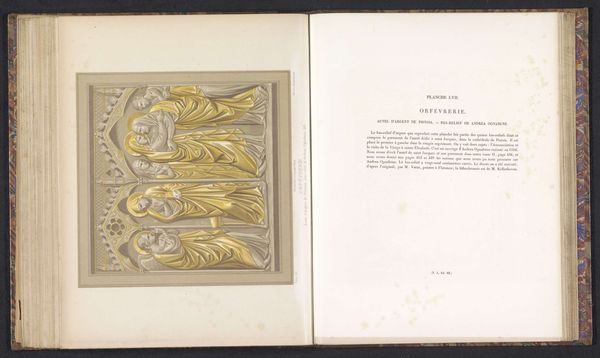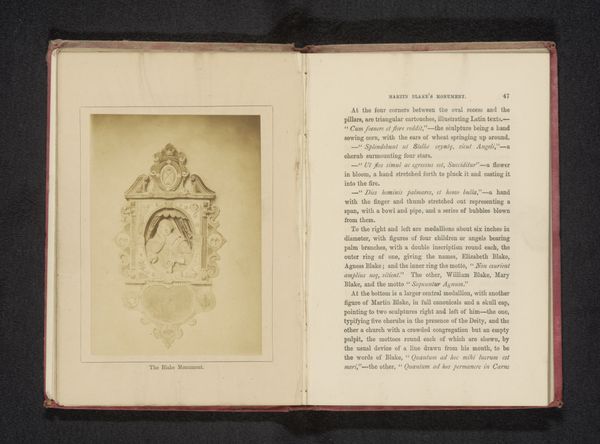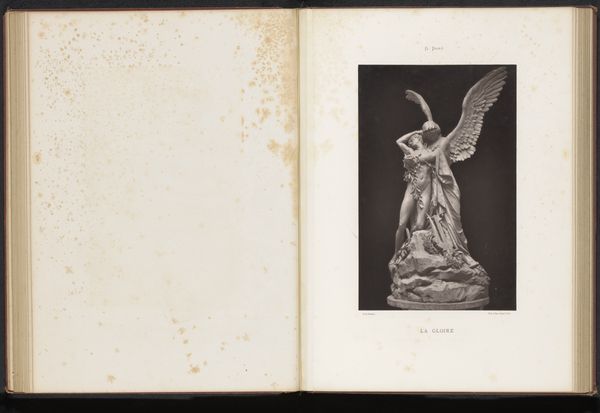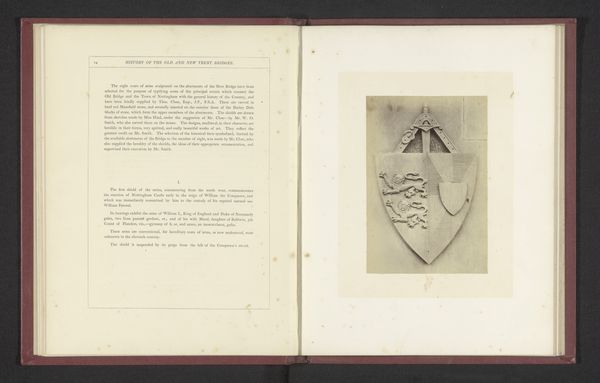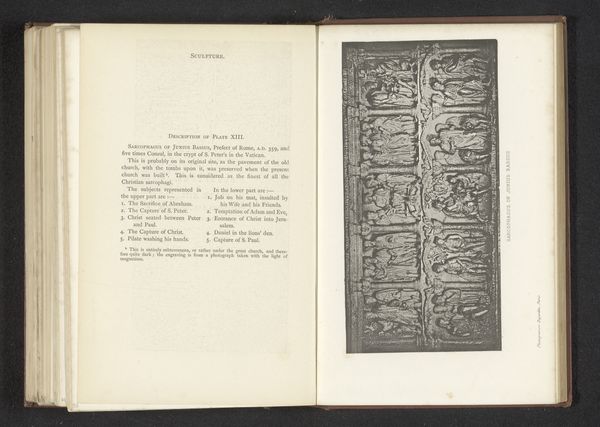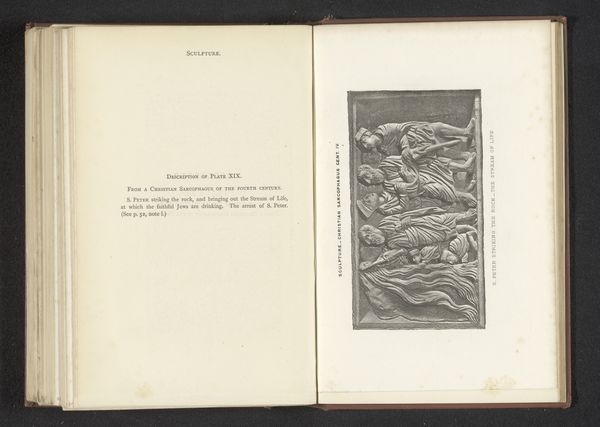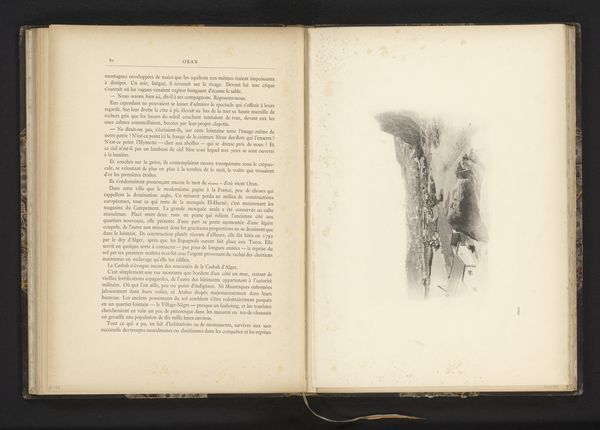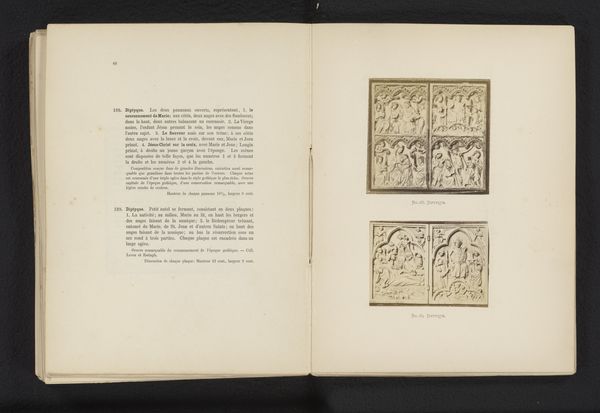
Ivoren Grieks triptiek, voorstellende de kruisiging van Christus en heiligen before 1856
0:00
0:00
relief, sculpture, ivory
#
byzantine-art
#
relief
#
figuration
#
sculpture
#
history-painting
#
ivory
Dimensions: height 126 mm, width 142 mm
Copyright: Rijks Museum: Open Domain
Editor: Here we have an image of what’s described as an Ivory Greek Triptych depicting the crucifixion and saints, believed to be from before 1856. It has a quiet and reverent mood, I think. What is your interpretation of it? Curator: This image really speaks to the historical role of religious objects, and the political weight they carried. The use of ivory, for example, instantly signals status and trade routes. This wasn't just a devotional object; it was a display of power, even within the Byzantine aesthetic of humility. Considering the date, ‘before 1856’, I wonder about its survival, rediscovery, and ultimately, its public presentation. The journey an artwork takes through time can reshape its cultural significance entirely. Who had it, where was it displayed, and who was it made for originally? These questions reveal much about societal values. Editor: That's fascinating. I never thought about the material as a marker of trade. So, would something like this likely be commissioned by someone of wealth or influence? Curator: Undoubtedly. Think about the logistics of acquiring ivory and the skill required for relief carving; the financial investment alone points to elite patronage. These objects served as tools of soft power, reinforcing religious doctrine, but also subtly reminding everyone of the commissioner’s elevated position. Museums and galleries amplify this inherent political statement through the act of acquisition and display, thereby validating particular historical narratives. Editor: I suppose it all comes down to who gets to tell the story. I am certainly walking away with a lot to think about. Curator: Exactly. This little triptych provides an excellent insight into how art, religion and politics were interconnected. Understanding this historical interplay gives us critical insights into how cultural values have shifted through the ages.
Comments
No comments
Be the first to comment and join the conversation on the ultimate creative platform.
